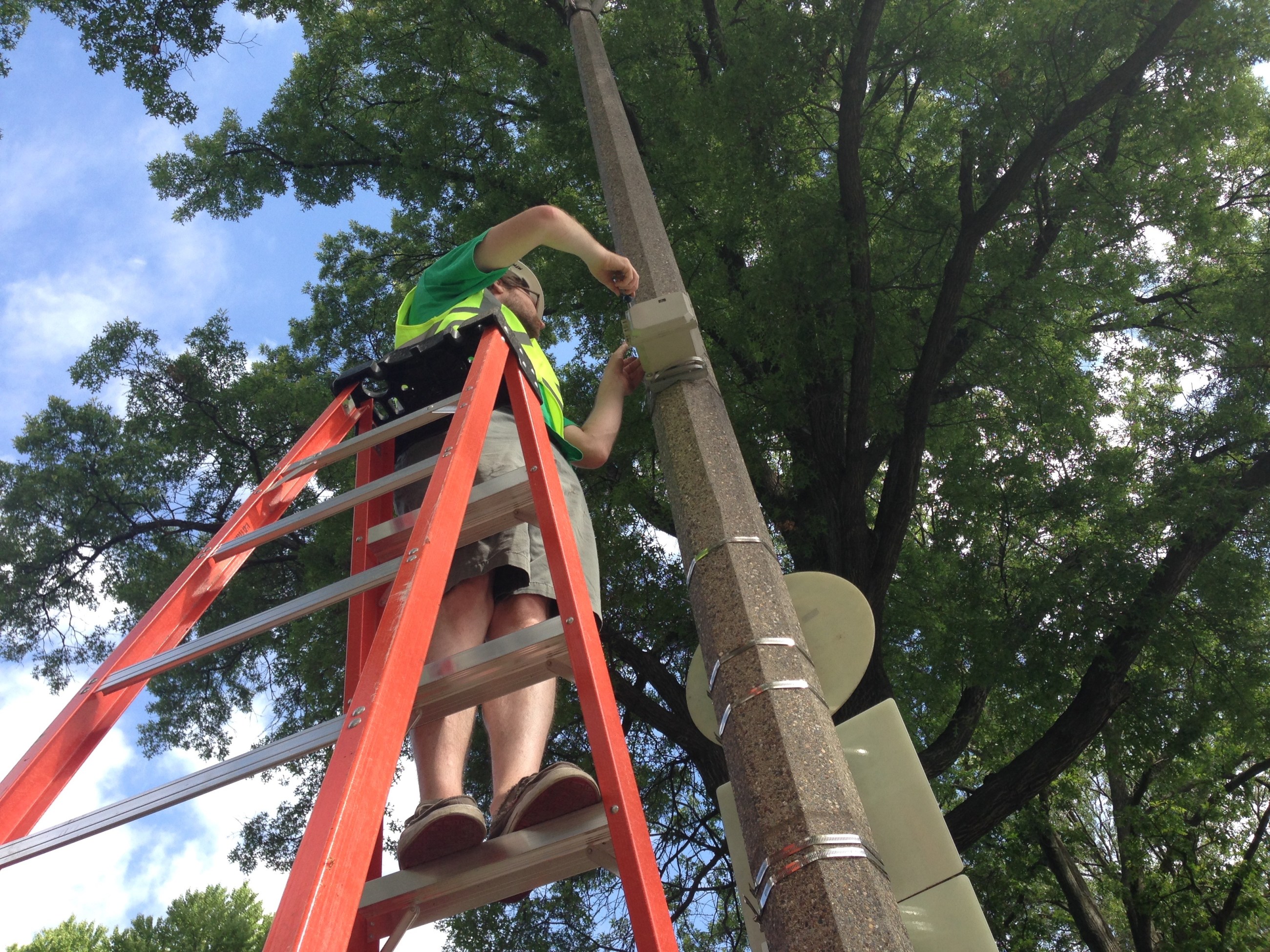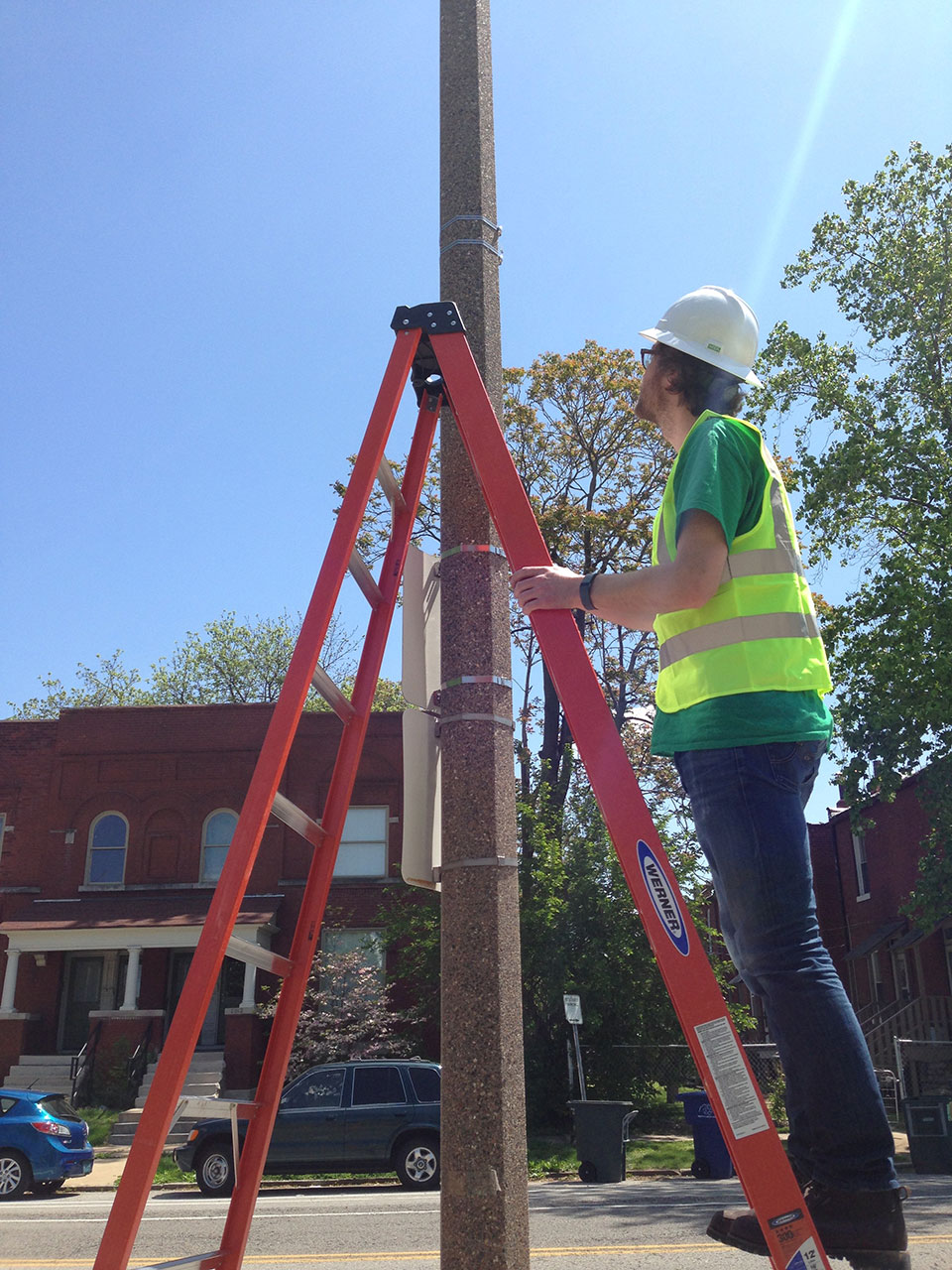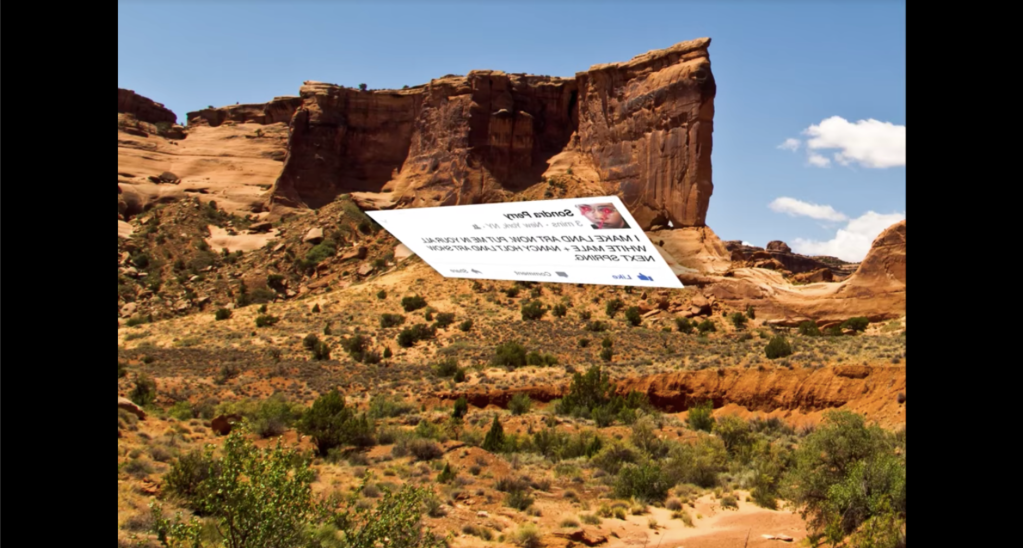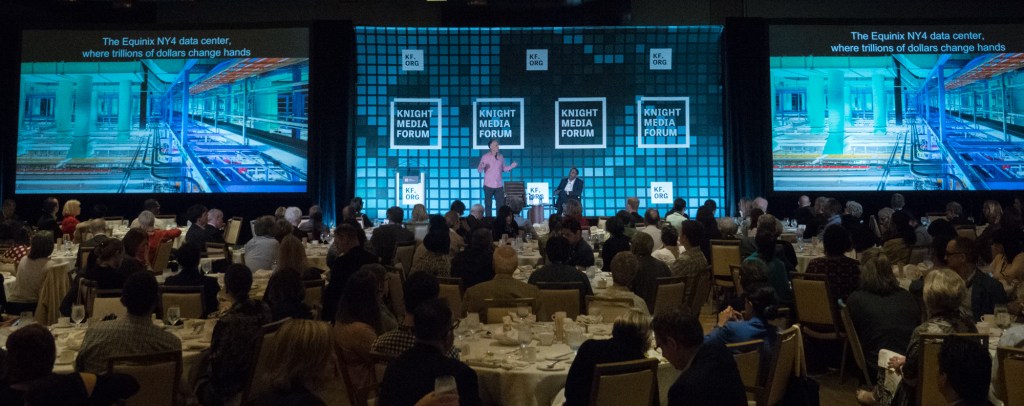
Knight Prototype Fund project Numina uses data to help build better cities
Tara Pham is co-founder and CEO of CTY, the makers of a plug-and-play bicycle and pedestrian sensor system called Numina. Below, she writes about her experience testing Numina on the streets of St. Louis, Mo., with support from the Knight Prototype Fund. The next Knight Prototype Fund deadline is Nov. 16. Photos provided by Numina.
It’s relatively easy to count cars. Lay down a tube in the road to figure out how many vehicles cross a screenline. People, on foot or bicycle, are not so easy. They don’t stick to pavement, lanes, straight lines.
Traditionally, it has been very resource-intensive to collect bicycle and pedestrian data. Often, the best option is to send out someone with a clipboard; this person is usually a volunteer that requires a lot of training and supervision, or it is an engineer billing at $70-80 per hour. It comes as no surprise, then, that we have lots of data to justify infrastructure for cars and not for people.
My CTY co-founder Martin McGreal and I want more walkable, bikable cities. When we think of our favorite places, we think of bustling retail corridors, or friendly and accessible public parks or culturally rich neighborhoods where people feel safe to walk. We don’t think of highways. Put simply, we’re urbanites. And we’ve both been hit. Martin spent four days in the Intensive Care Unit after being hit by a vehicle while riding his bike. I spent weeks going to a chiropractor after being hit by a city bus. “Accidents” like ours are not necessarily the fault of drivers; they are inevitable realities when our cities are built for cars and not for people. And while there are many wonderful advocates for people-first infrastructure, they could do more if data were more accessible.
So, we set out to build a solution to collect much needed bicycle and pedestrian data in the city we inhabit and love: St. Louis, Mo. With support from the Knight Prototype Fund, we were able to get not only funding, but sufficient political buy-in to launch pop-up deployments on city streets, test our sensors and do some ‘guerrilla’ data collection without having to deal with major red tape.

Small and mid-sized cities like St. Louis have a unique challenge. They don’t necessarily have full-time hardware engineers and data scientists on staff. Their budgets are tight, so it is difficult to introduce new technologies. We learned over the course of our Prototype Fund grant that the City of St. Louis does not collect car counts of any kind. Our challenge was not just to build a tool for counting bicycle and pedestrian traffic, but to encourage a shift in culture — placing data at the center of decision-making.
We focused on three major end goals:
- More data: Tracking pedestrians, bicyclists, traffic flow and other activity indicators, in open spaces (not just tripwire-style counts).
- Easy installation: Eliminating the need for special tools or skills; just mount it on a light pole.
- Lower costs: Creating something with few parts that is scalable.
Over many iterations, our prototype achieved these goals. We learned, more than anything, that a narrow focus was the best way to make our users happy. We designed our device specifically for measuring real-time bicycle and pedestrian activity on streets. Serendipitously, the Association of Pedestrian and Bicycle Professionals had their biennial conference in St. Louis toward the end of our Prototype Fund grant period, and we received an overwhelmingly positive response from the exact users we were targeting: bicycle and pedestrian planners.
As a civic technology, Numina has a major challenge: Its beneficiaries are not necessarily its users. It is rather the wider community that benefits from improved, more equitable bicycle and pedestrian infrastructure. The users — the people who deploy our sensors, collect and present the data, and use it for planning purposes — are professional transportation engineers and bike or pedestrian planners.
A welcome and unexpected part of the prototype development process was then our ability to deploy on streets, talk to curious passersby and hear their enthusiastic, sometimes deeply heartfelt gratitude for what we were building. We got face-to-face confirmation of the people we were helping, who live, work and play in the neighborhood and want safer streets.
People out and about in their neighborhood are the community’s best cheerleaders. We’re building Numina to empower more of them.
Recent Content
-
Artsarticle ·
-
Artsarticle ·
-
Communitiesarticle ·


